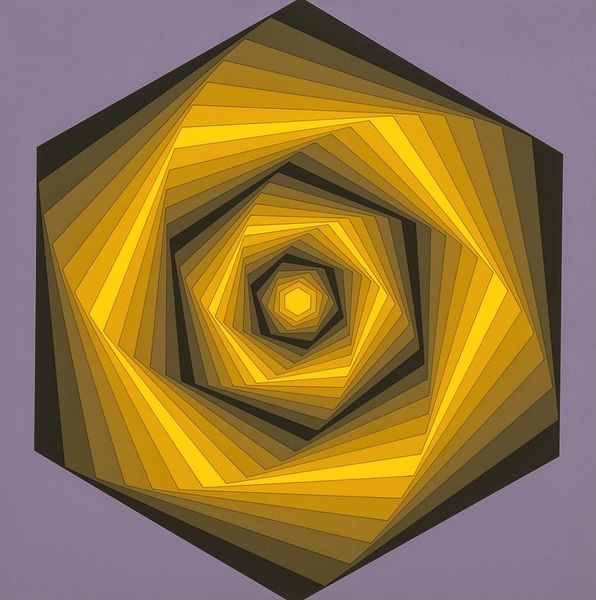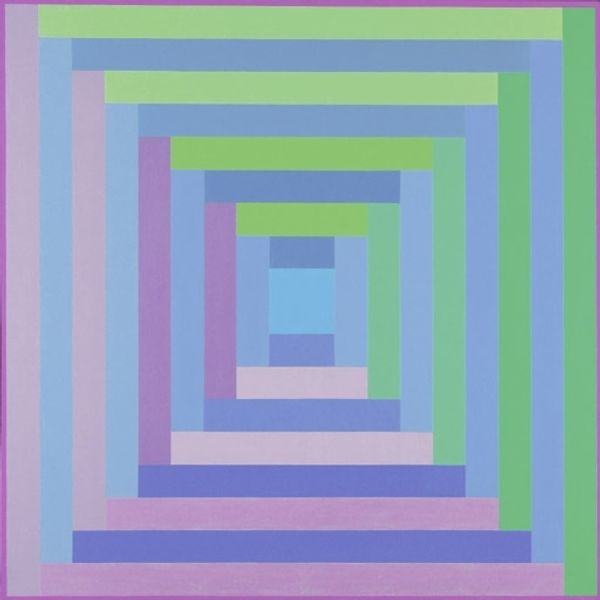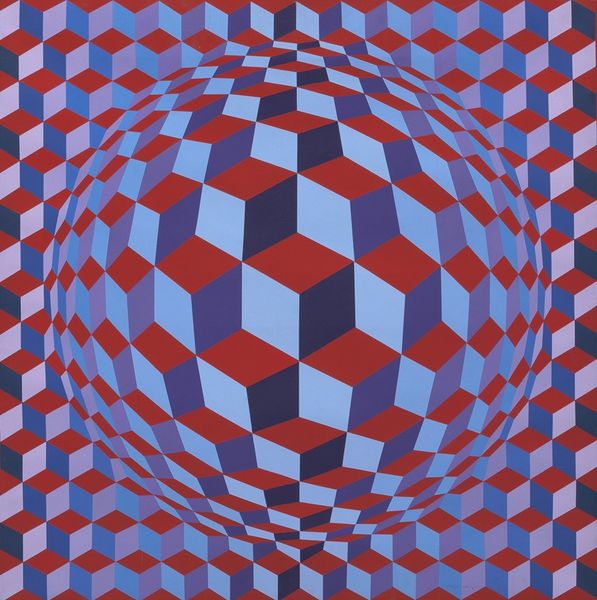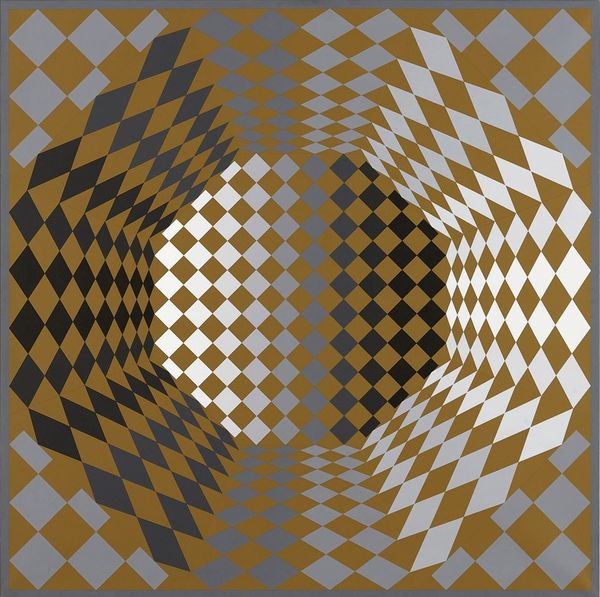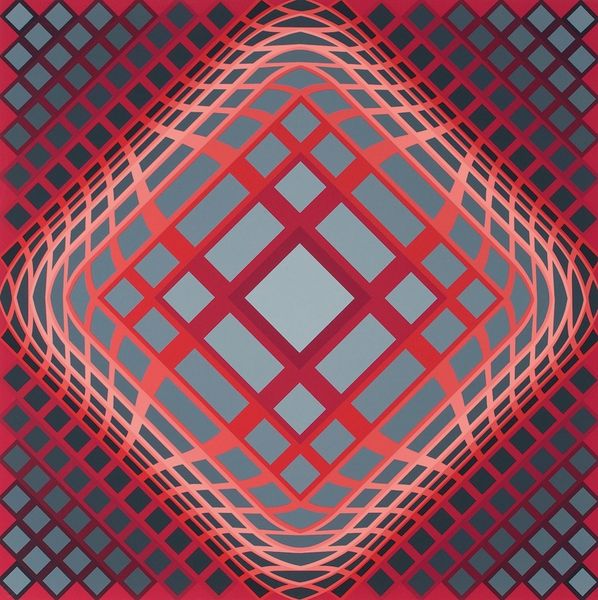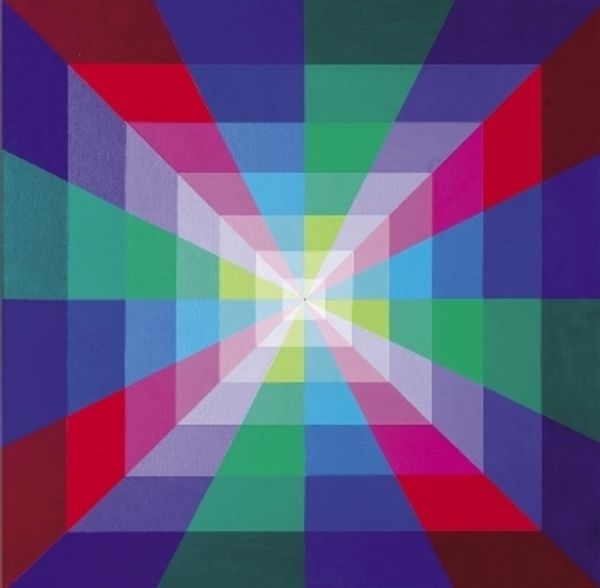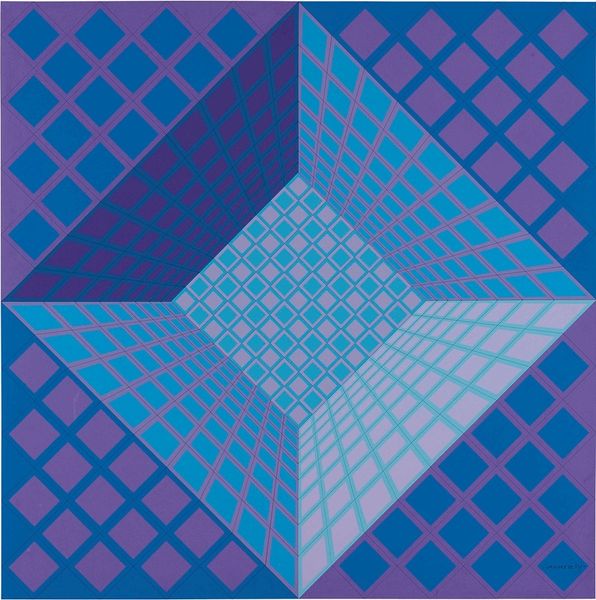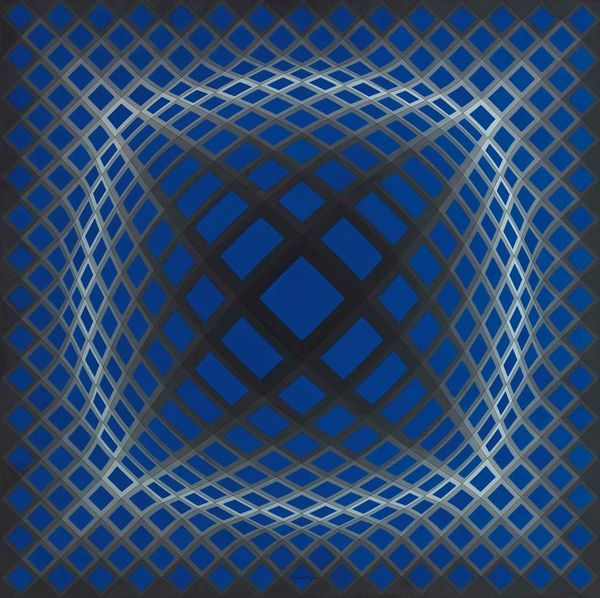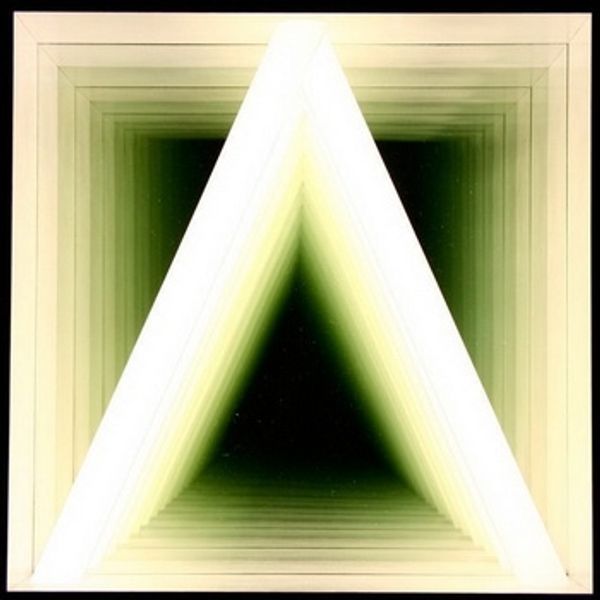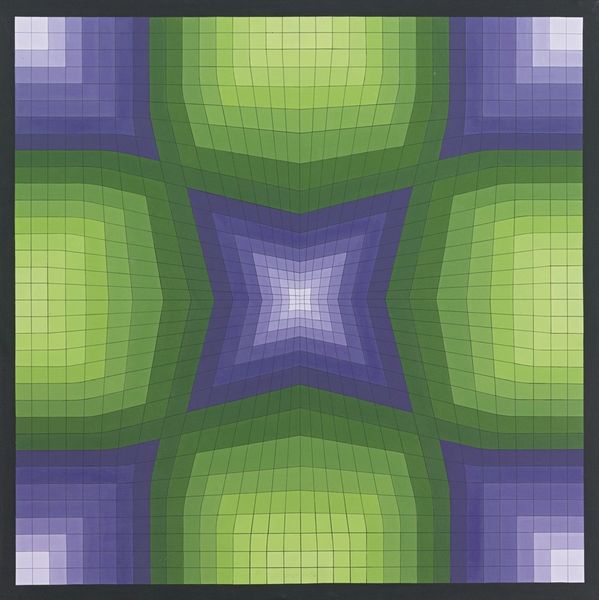
Copyright: Modern Artists: Artvee
Editor: Here we have "Villam," a 1988 acrylic painting by Victor Vasarely. It's a mesmerizing set of purple squares receding into the center; the piece really vibrates with optical energy. What’s your interpretation of this work? Curator: Well, Vasarely was a key figure in the Op Art movement, and to really grasp this piece, we need to understand its historical context. Op Art emerged in the 1960s, challenging traditional notions of perception and engaging with the rise of consumer culture. "Villam", though created later, echoes that fascination with visual stimulation. Do you see how it practically pulls you in? Editor: Absolutely, it’s like a portal! So, it's a commentary on consumerism through… optical illusion? Curator: In a way. Op Art mirrored the visual cacophony of advertising and mass media. It used abstraction to grab attention. Now, think about the social climate of the 1980s, when this was painted. What's striking about using geometric abstraction instead of direct cultural references or known brands? Editor: Hmmm. Perhaps, because it becomes less of an overt critique, and more of an embedded symptom? So not directly saying 'consumerism bad' but instead performing the same visual tricks, getting attention for attention's sake... Curator: Exactly! Vasarely isn’t just making a pretty pattern. He's participating in a dialogue about how we see, and, ultimately, what influences our desires within a society saturated by images. It raises questions about the role of art, the power of images, and our own perceptions in the face of a relentless visual culture. Editor: That gives me a lot to think about. It’s more than just a geometric pattern; it’s a reflection of our image-based society. Curator: Indeed. And understanding that shifts our engagement with the work.
Comments
No comments
Be the first to comment and join the conversation on the ultimate creative platform.
